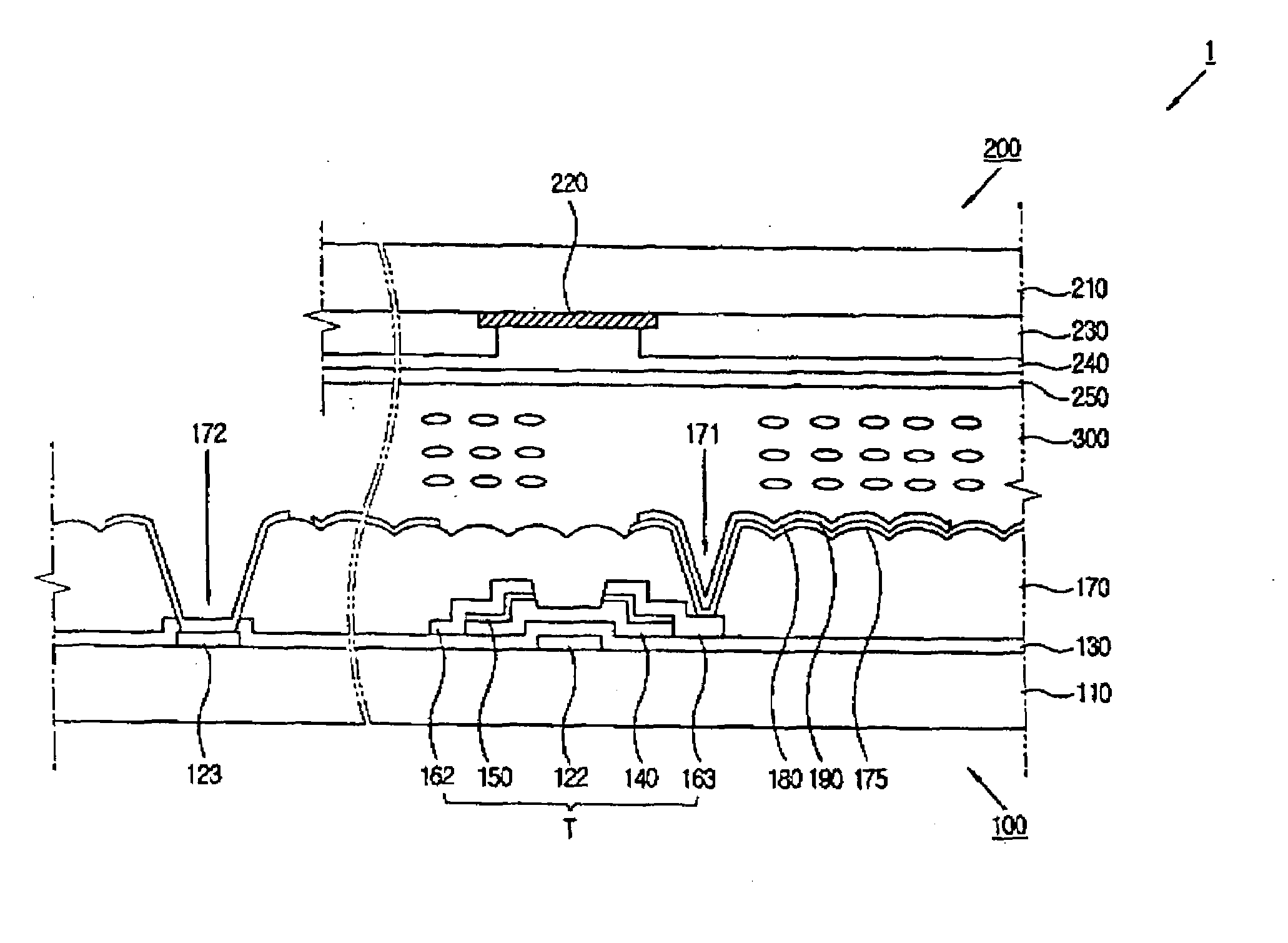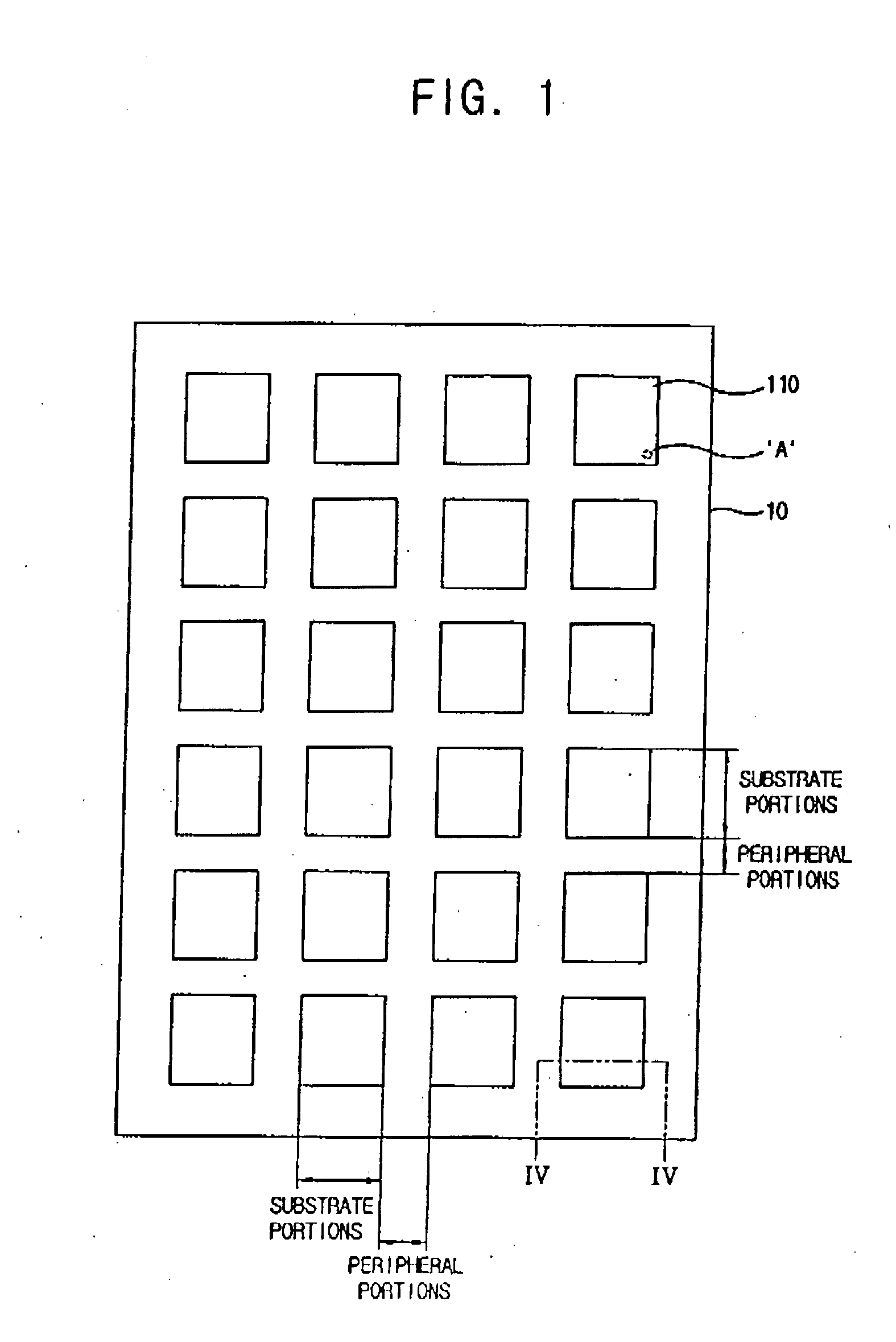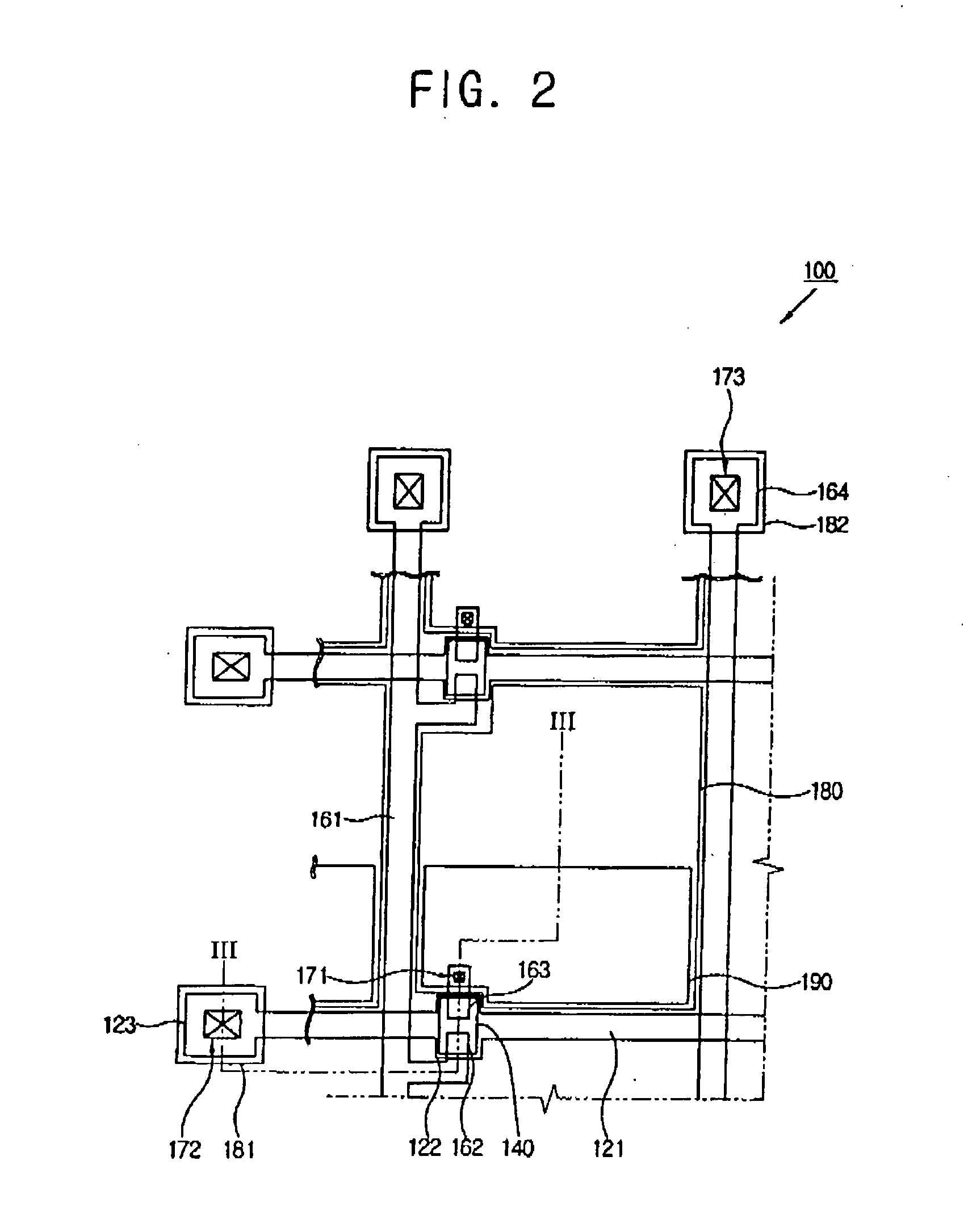Manufacturing method of liquid crystal display
a liquid crystal display and manufacturing method technology, applied in the field of manufacturing a transflective display device, can solve the problems of long manufacturing time and high manufacturing cost, low and inability to induce appropriate diffused reflection and scattering, etc., to achieve the effect of simplifying manufacturing processes and enhancing the yield and reflection efficiency of concavo-convex pattern
- Summary
- Abstract
- Description
- Claims
- Application Information
AI Technical Summary
Benefits of technology
Problems solved by technology
Method used
Image
Examples
first embodiment
[0024]FIG. 1 is a plan view illustrating a mother substrate substance according to the present invention, FIG. 2 is a layout of the area ‘A’ marked in FIG. 1, and FIG. 3 is a cross-sectional view cut along the dotted line III-III of FIG. 2.
[0025]Referring to FIGS. 1, 2 and 3, a liquid crystal panel 1 according to a first embodiment of the present invention includes a thin film transistor substrate (first substrate) 100, color filter substrate (second substrate) 200, and a liquid crystal layer 300 positioned between the first substrate 100 and the second substrate 200.
[0026]First, the thin film transistor substrate 100 will be described below.
[0027]As shown in FIG. 1, a plurality of first substrates 100 are manufactured from a large mother substrate substance 10 by a well-known thin film transistor substrate manufacturing process. Although FIG. 1 illustrates that 24 insulating substrates 110 can be made from the mother substrate substance 10, this is an example and not meant to be li...
second embodiment
[0062]The small-molecule organic layer is hardened by ultraviolet radiation or heat treatment. In the second embodiment, the mold 400 has a concavo-convex pattern 410 in the areas that will be aligned with a pixel area or a substrate area. In addition, the mold 400 has a protection film removing portion 420 positioned to align with the peripheral area of the mother substrate substance 10. The protection film removing portion 420 is extruded toward the organic passivation layer 170. Preferably, as shown in FIG. 5B, the protection film removing portion 420 is formed with a predetermined height so that it comes in contact with the insulating substrate 110 when the mold 400 is pressurized in the direction shown by the arrows. Here, in order to harden the organic passivation layer 170 while maintaining the concavo-convex pattern 175, the mold 400 is preferably made of a transparent material that can transmit ultraviolet radiation. The transparent material used for forming the mold 400 ma...
PUM
 Login to View More
Login to View More Abstract
Description
Claims
Application Information
 Login to View More
Login to View More - R&D
- Intellectual Property
- Life Sciences
- Materials
- Tech Scout
- Unparalleled Data Quality
- Higher Quality Content
- 60% Fewer Hallucinations
Browse by: Latest US Patents, China's latest patents, Technical Efficacy Thesaurus, Application Domain, Technology Topic, Popular Technical Reports.
© 2025 PatSnap. All rights reserved.Legal|Privacy policy|Modern Slavery Act Transparency Statement|Sitemap|About US| Contact US: help@patsnap.com



